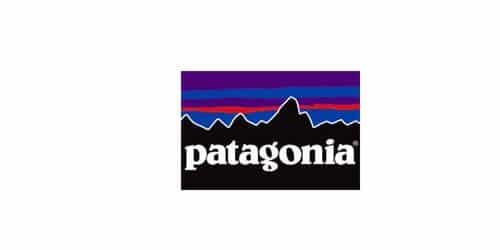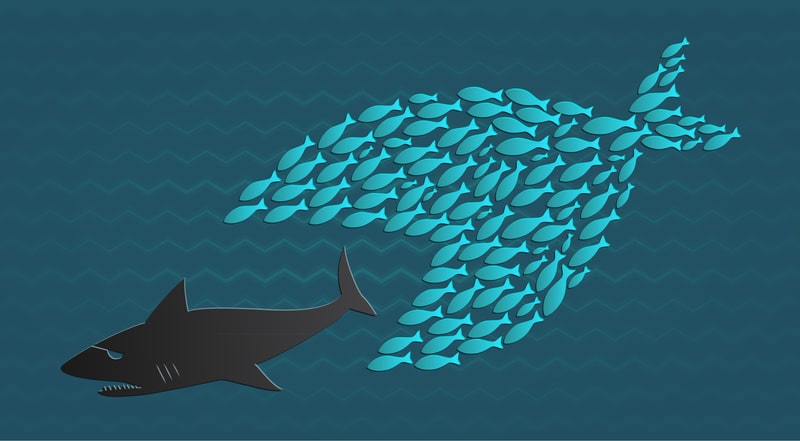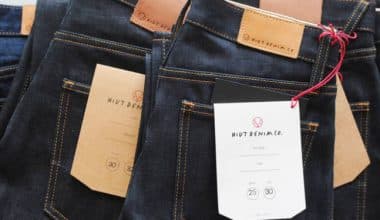Aside from being the pioneer of the “circular economy,” the Patagonia sportswear company is also one of a kind. The history of the company and the meaning behind its logo are great examples of how one person’s passion can start a worldwide movement. To learn more about the Patagonia logo found in South America, here in this article is the font history and various clothing and jackets packages sold by this brand.
About Patagonia
Patagonia is an American manufacturer, retailer, and distributor of outdoor and athletic gear. It debuted in 1973 and has called Ventura, California home since its inception. Yvon Chouinard, a successful entrepreneur, started the company. The mainstays of their inventory include outerwear like coats, caps, slacks, and boots, as well as niche items. Such as the alpinist’s gloves, poles, packs, and more. They only use the finest materials in their work, such as down and wool. The company has factories in 16 countries and hundreds of retail locations in 10 or more countries.
What Does The Patagonia Logo Mean?
The peak of Monte Fitz Roy, also known as Cerro Chaltén or Mount Fitz Roy, is a stylized representation of the Patagonia logo. It is situated close to the settlement of El Chaltén in the southern Patagonian Ice Field in Patagonia, on the boundary between Chile and Argentina.
Why Did Patagonia Stop Branding?
For the decision, the corporation cited environmental considerations. According to the manufacturer, adding a second non-removable mark shortens a garment’s lifespan.
What Kind of Fish is The Patagonia Logo?
The Patagonia Cerro Fitz Roy is the Patagonia kind of fish logo that may be the most recognizable.
Is Patagonia Getting Rid of Its Logo?
Patagonia will “move away” from incorporating corporate logos into its products in an effort to increase the longevity of its apparel.
Is Patagonia Elitist?
Parkas, fur, and trenchcoats are all represented there, showing off some serious winter coat variety. Patagonia is widely regarded as being an aristocratic brand, which is unfortunate for me.
How Much Are Patagonia Workers Paid?
From about $29,816 for Processors to $298,900 for Associate General Counsel, the average Patagonia income is per year. Between $10.75 to $30.96 per hour, on average, is what Patagonia employees make in their hourly jobs.
Patagonia Logo History
In 1973, when the firm Patagonia was formally established. Yvon Shinar, an American climber, founded the company. At first, he worked on climbing equipment. But after a trip to Austria in 1970, he returned with a number of sports uniforms. This proved popular with his friends and coworkers. And then Yvonne shifted to making high-end, all-natural clothes for tourists and climbers. A move that was both financially and creatively rewarding. The company’s namesake South American mountains inspired the business’s creator.
The company was an early pioneer in the field of thermal underwear production. And it also introduced innovative materials and brilliant colors to the world of athletic apparel. Patagonia has a philosophy that is reflected in the special touches added to all of its products and services.
Patagonia’s logo accurately represents the company’s name, as it depicts a profile of the Cerro Fitz Roy mountains (Fitzroy Massif) that tower over the town of El Schalten. While the trademark has evolved slightly during its lifetime, the core concept behind it has stayed the same.
Patagonia Logo Font
Yvon Shuinar worked with designer/artist Jocelyn Slack to develop the logo. The artist took Yvonne’s concept and made it concrete. Even though the girl claimed that she had never been to Patagonia before, Yvon’s vivid descriptions inspired her to go there. She intended for the insignia to represent all of these feelings. The 1976 spring collection marked the debut of the logo on the packaging of branded goods.
The original logo stood out due to its vivid colors and unique design. A rectangular plate with a black center and a white border depicting the Fitz Roy array’s profile. The sky is a vertical tapestry of blue, violet, and orange above this. The name of the company, “Patagonia,” appears on a black backdrop, while the slogan, “There every step of the road,” appears to the right of the brand name.
Current events have not rendered this version obsolete. Two new logos were created in 2011 to reflect the expansion of the company’s product offerings.
One is black and white, with the word “Patagonia” written in white using a standard font. And the word “provisions” is written directly below it in larger letters. The other is a white and blue version (the background is white, and the profile of the mountains and the inscription are blue). The phrase “On Thames Street” appears under the word “Patagonia” (the name of the hotel chain where climbers stay). The name of the brand was made with Blue Bold, which is a serifed typeface that is in between block letters and capital letters. The palette of white, black, blue, pale orange, and purple, on the other hand, remains constant. The sunset sky in Patagonian is a vivid blue, and these colors aim to capture that hue.
Patagonia Logo Font Color
Black, white, blue, violet, and orange make up the Patagonia logo’s color scheme. The dark color represents the Monte Fitz Roy silhouette. A white outline defines its shape. While the sky is various colors of blue, violet, and orange, the nameplate is pure white.
Patagonia Font Logo
The Patagonia wordmark is a slick, aggressive logo font with serifed lowercase characters. The spaces between them are relatively narrow. Unique and eye-catching is the ‘g’ character’s lower story, which was designed by the designer.
Patagonia Jackets Logo
Patagonia’s logo, which shows the Fitzroy Massif in purple, orange, and black, has become a symbol of the company’s commitment. Before making a purchase, think about how you’ll be wearing your new Patagonia jackets and what kind of weather you anticipate. Depending on your environment, you may need a model that is completely waterproof, while in other cases, a model that is resistant to wind may be all that is required. Last but not least, most Patagonia jackets run large, so if you’re between sizes, go down.
There is no better selection of Patagonia jackets than the ones we have here.
#1. Patagonia Men’s Nano Puff Insulated Jackets (Best option Patagonia Jackets)
Justifiably, Patagonia’s Nano Puff is the company’s best-selling puffy jacket. Its adaptability and practicality are unparalleled. You could virtually wear it year-round in the Western United States. This PrimaLoft Gold Insulation jacket weighs in at a moderate 60 grams, making it ideal as either a standalone piece of outerwear during the shoulder seasons or as a mid-layer under a hardshell on snowy days. The shell is windproof and water-resistant thanks to its DWR treatment and 100 percent recycled polyester ripstop construction. The Nano Puff is sufficiently warm down to the thirties, but if the temperature drops below that, you may want to layer up or wear a thicker garment, such as Patagonia’s DAS Hoody.
#2. Patagonia’s Houdini Full-Zip Jacket (Best Wind Shell Patagonia Jackets)
The Patagonia Houdini was revolutionary when it came to ultralight windproof jackets, and it remains a top pick today. Protection from the elements that fit in your pocket, weighing in at just 3.7 ounces and collapsing to about the size of a baseball. An adjustable hood and a tough outer shell constructed from 100% recycled nylon ripstop add to the jacket’s versatility. One breast pocket can be used as a storage sack.
#3. Patagonia Thermal Airshed Jackets(Best Running Coat Patagonia Jackets)
Choosing the right running jacket might be challenging. When engaging in high-effort pursuits like jogging, you’ll likely sweat a lot and require a jacket with excellent breathability, but you’ll also want warmth for the colder days. The Thermal Airshed from Patagonia is made to be extremely breathable.
The 100 percent recycled polyester PlumaFill insulation is strategically zoned so that body heat can escape readily from the front and back, while the front and tops of the arms keep you toasty and protected from the chilliest of breezes. The DWR coating on the exterior provides some protection from moisture. Check out the Storm Racer Jacket if you need something that won’t let the rain in.
#4. The Patagonia Jackson Glacier Parka (Best in Fashion Patagonia Jackets)
This down jacket has a dressier take on Patagonia’s technical designs while still maintaining its technical features. A 2-layer, 100% recycled polyester fabric with a Durable Water Repellency coating creates the muted face’s water resistance and windproof properties. The 700-fill power of recycled down ensures that you’ll be toasty warm inside. You can safely store your phone in the internal media-compatible zip pocket or the roomy front hand pockets, which are lined with soft brushed jersey. Slim and true to size, this style comes in a longer parka as well as a shorter-waisted option.
#5. Patagonia Women’s Torrentshell 3L Jacket(Best Rain Patagonia Jackets)
You can’t go wrong with the Torrentshell 3L if you’re searching for a straightforward raincoat at a reasonable price. Patagonia’s H2No Performance Standard guarantees the highest level of long-term waterproof performance with minimal impact on the environment, and even though the Torrentshell 3L Jacket uses a 3-layer, 3.3-ounce 50-denier ECONYL 100 percent recycled nylon ripstop fabric instead of the popular Gore-Tex, it still meets this standard.
The addition of micro fleece to the collar is a thoughtful design choice. In case you are warm while wearing the jacket, you can use the two huge pit zips to release some of the steam. The hood may be pulled in two different directions and features a laminated visor and a cord and hook for storage when not in use. When not in use, the raincoat folds up into its chest pocket to take up as little space as two Coke cans.
#6. Patagonia Untracked Jacket (Best Skiing and Snowboarding Outerwear)
Jackets for snow sports are frequently abused. Tree branches, sharp ski, and snowboard edges, the on-and-off operation of chairlifts, and the elements all contribute to an already hazardous environment. The Patagonia Untracked Jacket is as durable as they come, thanks to its sturdy three-layer 70-denier Gore-Tex construction. This ski-ready jacket has all the bells and whistles you need to enjoy more comfortable and productive days on the slopes. Thanks to the stretch Gore-Tex membrane, the bulky shell is surprisingly flexible, and the flannel backer minimizes chafing against your base layer.
When the snow is deep, you can cinch the waist of your powder skirt, but on sunny days, you can just let it hang loose. It’s helpful to have big pit zips to release excess heat when things get heated up. There is also plenty of room in the pockets. One secure media chest pocket with cable routing, two hand pockets on the sides, and a pass pocket on the forearm. There are two pockets on the inside, one with a zip and one with a drop-in design.
#7. Patagonia Down Sweater Hooded Jacket (Best Down Patagonia Jackets)
A down jacket, or puffy, is the one type of winter outerwear that every person should have. The Down Sweater Hooded Jacket by Patagonia is the standard by which all other puffy jackets are measured.
The 800-fill goose-down filling is encased in a DWR-coated, windproof 20×30-denier shell made of 100% recycled polyester. The elastic hem and cuffs add extra warmth and can be tightened to stop cold air from getting in. The jacket can be easily packed into its own chest pocket to a size slightly smaller than a football.
#8. Patagonia Grade VII Down Parka (Best for Extreme Cold Patagonia Jackets)
This is the coat you’ll want if your travels take you to the arctic tundra or Antarctica. The 800-fill goose down inside will force you to reevaluate your usual cold-weather attire. The goose down is NSF International certified, so you know the birds that provide it weren’t force-fed or live-plucked, in keeping with Patagonia’s usual eco-friendly standards. The shell’s 20-denier Pertex Quantum Pro back and sides and 15-denier Pertex Quantum Pro front are made from 100% recycled nylon with a Durable Water Repellent coating. The snow skirt, cuffs, and elastic cord all work together to keep the cold out. Two chest and two side zippered pockets are insulated with down to reduce heat loss. This level of mega-warmth doesn’t come cheap. If you can’t swing the high price tag, the Fitz Roy Down Hoody is half the cost and still one of the warmest down coats available.
#9. Patagonia DAS Light Hooded Jacket (Best Lightweight Insulated Patagonia Jackets)
Popular among Patagonia customers, the DAS Light hooded jacket is made of ultralight nylon ripstop treated with a durable water-repellent treatment to fend against precipitation. And it’s filled with 65 grams of eco-friendly polyester from PlumaFill. It has a zip hidden beneath its monochrome snap fasteners, and that’s what really seals out the snow, wind, and rain. The hood can be tucked into the collar when you’re not using it, and there’s a hidden pocket inside for your phone. Both men’s and women’s sizes go all the way up to the extra big end of the spectrum.
#10. The Patagonia Men’s Micro Puff Hooded Insulated Jacket (Most Packable Patagonia Jackets)
You’ll love the Patagonia Micro Puff Hooded Jacket if you’re the sort who thinks in terms of centimeters and ounces when shopping for clothing and equipment. This lightweight, minimally insulated jacket weighs only 9.3 ounces and compresses down to the size of two Coke cans. Shell is ultralight DWR-coated nylon ripstop from Pertex Quantum, which is both modestly windproof and water-resistant. Thanks to its synthetic PlumaFill insulation, the Micro Puff is incredibly compact and light, and its distinctive off-set checkered stitching pattern prevents the insulation from migrating and generating dead loft regions.
#11. A Patagonia R1 Air Full-Zip Hoodie (Best Fleece Patagonia Jackets)
Regardless of its number on the list, this Patagonia item is one of the top picks based on our evaluations. It’s as comfortable as Patagonia’s Better Sweater, but it has the technical prowess of our go-to alpine climbing garment, the original R1. When compared to most fleeces, this one is designed for high-output activities and will be appreciated for its excellent breathability. The R1 Air’s unique zigzag design in the 100% recycled polyester jacquard fleece makes it more breathable and moisture-wicking than regular fleece. The style differs from the typical Patagonia jacket in that it has an athletic, close fit and long sleeves.
#12. Patagonia’s Diamond Quilted Bomber Hoodie (Best Affordable Option for Patagonia Jackets)
The Diamond Quilted Bomber Hoodie combines the best features of a traditional bomber jacket and a classic Patagonia down sweater to create the ideal shoulder-season casual jacket. Featuring a PFC-free DWR finish, this windproof and water-resistant hoodie is made from 100 percent recycled polyester taffeta. Diamond quilting adds style and function to the 80-gram polyester insulation that keeps you warm in this stylish jacket. The jacket’s heat-trapping properties are enhanced by the inclusion of elastic cuffs at the wrists and the waist.
Why Does Patagonia Have R on Sleeve?
(The letter R in the word regulator stands for the capacity to control body temperature.) Since then, the company has added hybrids and higher-loft spinoffs to its Regulator idea.
Why is Patagonia So Popular Now?
Patagonia is a business with specific values that creates goods suitable for customers with particular objectives. It follows that certain people have a strong affinity for its goods, to the extent that it isn’t an exaggeration to call them obsessions.
Why is Patagonia So Special?
Patagonia is mostly known for its picturesque landscapes, extensive forests, natural reserves, national parks, glaciers, and indigenous species. Patagonia is an area made up of several provinces, each of which has a unique set of attractions.
Who Owns Patagonia the Country?
Both Chile and Argentina are democratic republics. Chile and Argentina both share the region of Patagonia. Both countries have created non-equivalent administrative divisions for their respective Patagonian territories: provinces and departments in Argentina and regions, provinces, and communes in Chile.
What Type of People Buy Patagonia?
More than 43% of Patagonia’s devotees are between the ages of 35 and 54, demonstrating the brand’s popularity with middle-aged customers. But those age groups are drawn to The North Face more than anything.
Does Patagonia Support PETA?
The Patagonia statement states, “PETA does not believe in the use of animals for any human purpose; this is a belief we respect but do not share.
Patagonia Clothing Logo
There is something for everyone at Patagonia clothing, whether you’re motivated to shop there because of the company’s tremendous commitment to the environment or you’re just getting a jump on your holiday shopping. Below are the various options for Patagonia clothing brand options for both men and women:
#1. Patagonia Clothing: Nano-Air Vest for Women
The Nano-Air Vest with a Patagonia brand logo is a versatile layering piece made from 100% polyester that will keep you dry and comfortable in any climate. The elasticized hem and two handwarmer pockets provide plenty of storage space, while the chest pocket and other pockets are great for keeping your hands warm. During his daily hike, the reviewer “wanted something that would keep me warm without keeping me too warm,” so he purchased this vest. His words: “Typical jackets make me too hot by the time I get halfway through an activity; I sought out something toasty that would still allow my arms some freedom of movement.” This vest is available in black and blue, with sizes ranging from XXS to XL for ladies. The vest is said to run small, so customers should order a size up.
#2. Patagonia Clothing: Men’s Terrebonne Joggers
The Terrebonne Joggers with a Patagonia brand logo are a great investment for your regular hikes or even just your trips to the coffee shop. The joggers combine a sleek design with practical features. Many reviews have praised these joggers for their adaptability, praising their drawcord waist, drop-in, and zipper pockets, articulating knees, and ultralight fabric. One reviewer brags, “I possess two of these pants; very breathable and soft. I use mine for lounging at home and running errands. Dressy enough for a casual dinner if you so want, and Super convenient for trips.” The Terrebonne Jogger is available for purchase in six different colors and sizes ranging from extra small to extra large for men.
#3. Patagonia Clothing: Fjord Men’s Long-Sleeve Flannel Shirt, Midweight Organic Cotton
Is there anything more autumnal than a man wearing a plaid shirt? Due to its soft fabric and ability to insulate the wearer, as well as its fashionable plaid patterns, a basic flannel shirt is a perfect item to have on hand when the first fall breezes blow. Many people find comfort in wearing Patagonia’s Long-Sleeved Organic Cotton Midweight Fjord Flannel Shirt every day. Wear the flannel shirt tied around your waist with some jeans and a T-shirt for a retro style. Positive comments consistently highlight the shirt’s longevity, ease of use, and high standard of craftsmanship. Buy men’s sizes XS to XXL in 12 different hues of the Midweight Fjord Flannel Shirt.
#4. Patagonia Clothing: Women’s Micro D Snap-T Fleece Pullover
Recognize the power of a simple pullover. The Micro Patagonia brand logo D Snap-T Fleece Pullover has become a winter staple because it is great for both light exercise and lounging around the house. The people who made the jacket out of 100% recycled polyester microfleece were guaranteed a fair wage for their efforts because it has a fair trade label. Some hues have a color block design that gives the item more character without drawing too much attention to itself. For its adaptability, this pullover has received rave reviews from reviewers. One user even claimed that it was an ideal choice for both mild summer evenings and cold winters. Women’s sizes XS to XL can be purchased in one of five hues of the Micro D Snap-T Fleece Pullover.
#5. Patagonia Clothing: Men’s Better Patagonia brand Logo Sweater Fleece Vest
Are you on the fence about purchasing the Better Sweater Jacket? The Better Patagonia brand logo Sweater Fleece Vest is an option. Although the Patagonia vest has become a meme thanks to its popularity among tech and finance bros, there is some truth to the joke. There is more to the Better Sweater Vest than meets the eye. “The vest is a perfect fit,” raves one reviewer. In the sweet spot between slack and tight. Additionally, it’s warm enough without the cumbersomeness of a conventional jacket. It’s so flexible, you can use it practically any time. Furthermore, this style is appropriate for the workplace. When I wore the vest, I received numerous compliments on how good I looked. The Better Sweater Fleece Vest comes in six different sizes ranging from extra small to three extra large for men.
Patagonia South America
Patagonia encompasses the southern cone of South America, a region that is roughly 800,000 square kilometers in size (including parts of both Chile and Argentina). Chilean territory begins south of Puerto Montt. Argentine territory begins south of the Colorado River. Cape Horn is located on Tierra del Fuego, the southernmost tip of South America. At a population density of only a couple of people per square kilometer, Patagonia is one of the world’s least populated areas.
#1. Ride The Ice Floats On Lago Argentina
A trip to Patagonia in South America is not complete without a glacier cruise on Lago Argentino. On the way to the first destination, Upsala Glacier, the boat passes oddly shaped, bright blue icebergs. Upsala, at 10 km in width, is by far South America’s largest glacier.
This is because the entire glacier face can collapse at once, sending boats careening into the water in a massive and potentially dangerous wave. Instead, you can relax and take in the breathtaking scenery while staying well away from the glacier.
#2. Bike Around Llao Llao Municipal Park
Llao Llao Municipal Park is home to some of Bariloche’s best hiking paths as well as some stunning vistas. Cerro Llao Llao is the name of a trail that is considered to be among the best in the Patagonia South America park.
This is a short, straightforward hike that entails mostly flat walking and a 20-minute ascent to the Cerro Llao Llao lookout. Not only does this one-of-a-kind location provide stunning panoramas of Llao Llao Municipal Park and Nahuel Huapi National Park, but it is also far less crowded with sightseers than the area’s other popular vantage sites.
Here, you have the option of turning around or continuing on to Villa Tacul, a peaceful and secluded beach with gin-clear water. Those coming from Bariloche should take Bus No. 20 and alight at the final stop before entering the park. You can get a map and visitor information at the small center located just inside the park’s main entrance.
#3. Drop by The Egidgo Feruglio Palentology Museum
The Perito Moreno glacier and the beautiful Iguazu waterfall are better known than the Egidio Feruglio Paleontology Museum in Trelew, Argentina. It’s true that few people who travel to Argentina’s Patagonia, South America, are familiar with it. However, visitors who make the trip are often taken aback by the sights they see.
The main attraction takes visitors back in time to the first human settlements in the area ten thousand years ago. There are fossils of land and marine animals from the Cretaceous, Jurassic, Triassic, and other periods on display.
The most impressive exhibit is the Mesozoic Hall, which features life-size reconstructions of the enormous dinosaurs that once lived in Patagonia. A film describing the Big Bang is shown in a cozy theater, allowing you to extend your time travel all the way back to the Big Bang itself.
#4. Explore Los Alerces, National Park
Patagonia is home to some of the world’s most stunning natural landscapes, and Los Alerces National Park (Parque Nacional de Los Alerces) is often overlooked despite its stunning beauty. It’s located in Argentina’s Province of Chubut.
The large evergreen tree known as the alerce, which can live for hundreds of years, is the park’s focal point. “El Abuelo” (grandfather) is one of the oldest trees in the area and is estimated to be 2,600 years old.
Going on a hike in a national park is a fantastic adventure. There are a number of stunning lakes to visit, including Lake Futalaufquen, Lake Cisne, Lake Menendez, and (our personal favorite) tiny Green Lake. In fact, rivers like the Los Arrayanes River link all of these lakes together. Great vistas allow visitors to take in the surrounding mountains and glaciers from within the park.
#5. Ski Martial Glacier
Skiing is one of the most adrenaline-inducing activities available in Patagonia between June and October. And I can’t think of a more exhilarating outdoor activity than skiing down a glacier.
A large number of hikers visit Martial Glacier on a daily basis throughout the year because of its prominence as a tourist destination in Argentina. The glacier is beautiful at any time of year, but especially in the warmer months. So, too, are the sights from the top of the glacier, which span the entire archipelago of Tierra del Fuego.
Because it is located at the resort’s peak, the glacier serves as the access point to the resort’s more challenging runs. From the top of the ski lift, skiers can choose between two distinct slopes. Despite being on the south side of the mountain, these runs can be brisk and thrilling due to the downhill winds.
While the width of the main run is only about 30 meters, there are opportunities for off-piste skiing in the surrounding area. These, however, are extremely difficult and should only be attempted by those who have a reliable guide. Whatever your preference, a trip to Martial Glacier for skiing is sure to be one of the highlights of your life.
#6. Sail Near Perito Moreno Glacier
Do yourself a favor and visit Perito Moreno if you only do one thing in Argentina. It’s one of the top tourist destinations in Argentina and is widely considered to be the best glacier in Patagonia. It brought me to tears to stand in front of the glacier and see huge blue ice chunks break off and fall into the lake below. It was one of those rare occasions when I was able to witness nature’s full fury.
The Perito Moreno ice field is remarkable for its resilience in the face of global warming. So it’s not falling back; rather, it’s making progress. Glaciers are living, moving things that carve new paths through the mountains. The calving of ice (ice breaking off and falling into the lake) is a natural occurrence.
#7. Snorkel With Sea Lions in Reserva Loberia De Punta Loma
Few people consider Argentina when planning a trip to see exotic animals up close and personal. In contrast, Patagonia in South America is home to a wide variety of terrestrial and marine animals. Also, many of the best animal encounters can be had without paying for an expensive tour package, since many of the area’s best attractions are well-suited to traveling on your own.
Less than 10 miles southeast of Puerto Madryn, the Reserva Loberia de Punta Loma provincial reserve offers a unique marine experience. Getting there by car on a Patagonia road trip is simple, and a taxi ride takes only half an hour.
Sea lions are abundant in Golfo Nuevo, and they can be seen playing in the water or relaxing on the shore from this point. Nonetheless, why not snorkel with these jovial, inquisitive creatures for a truly immersive experience?
#8. Stroll Along Viedma Glacier
It would be a shame to visit Patagonia in South America and not go on a glacier hike. Even though Viedma isn’t as well-known as El Chalten, it’s still worth making the trip.
While Perito Moreno is undoubtedly Patagonia’s most well-known glacier, visitors should be aware that hiking there can be both expensive and congested. Even though it attracts a fraction of the visitors that Perito Moreno does, Viedma is every bit as impressive to behold.
Crampons, a harness, and an ice axe will be provided once you reach Viedma, and you’ll be instructed to follow your guides as they make their way up the glacier’s edge, navigating around icy pinnacles and crevasses of a deep blue hue.
#9. Visit Punta Tombo to See Magellic Penguins
The largest colony of Magellanic penguins in all of Latin America can be found on Punta Tombo, a narrow rocky strip on Argentina’s central coastline that extends about 2.2 miles (3.5 kilometers) into the sea. With their spaciousness, mild slope, and abundance of cover (including shrubs and burrows), penguins can’t ask for a better place to raise their young than these beaches. Because of this, Punta Tambo was designated as a wildlife conservation area in 1979 and is now home to a population of penguins estimated at over 500,000 pairs.
One of the most unforgettable things to do in Patagonia is to visit Punta Tombo and walk among the penguins on trails and boardwalks. Their curious but reserved personalities are irresistible.
Where is Patagonia USA?
Santa Cruz County, Arizona, in the United States, contains the town of Patagonia. There were 913 people living in Patagonia as of the 2010 census. Midway through the 19th century, Patagonia grew as a commercial and supply hub for local ranches and miners
What Country Does Patagonia Come From?
An American company called Patagonia, Inc. sells outdoor clothes. Its headquarters are in Ventura, California, and it was started by Yvon Chouinard in 1973. Patagonia runs factories in 16 different countries and has storefronts in over ten of them.
Is it Safe to Travel to Patagonia?
The quick response is yes! For Americans and other international visitors, Patagonia is a safe place to travel.
What Problems Are Patagonia Facing?
Patagonia is a company that produces clothing, a sector known for its cruelty of animals, disregard for human rights, and disregard for the environment. In the garment sector, Patagonia is one of the few companies that practice sustainability.
Is Patagonia 1% For The Planet?
They resolved to donate 1% of their sales to the environment, whether or not they were profitable, after realizing their duty to protect our planet. 1% for the Planet is a worldwide initiative that was launched in 2002 by Patagonia and Blue Ribbon Flies founders Yvon Chouinard and Craig Mathews.
Is Patagonia A Hippie Brand?
When it was first established in 1973, the business sold mountain climbing equipment and appealed to hippies who loved the outdoors.
Related Article
- Patagonia Brand: The Unique Approach To Environmental Sustainability
- Target Marketing: All you need to know
- Men’s Clothing Business Casual: Best business casual for men (+tips)
- BEST PARK: All You Need to Know and Extra






